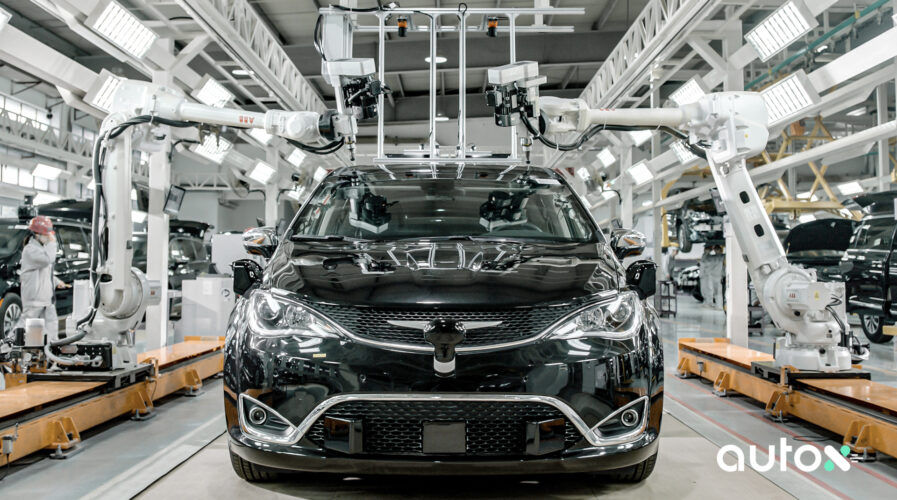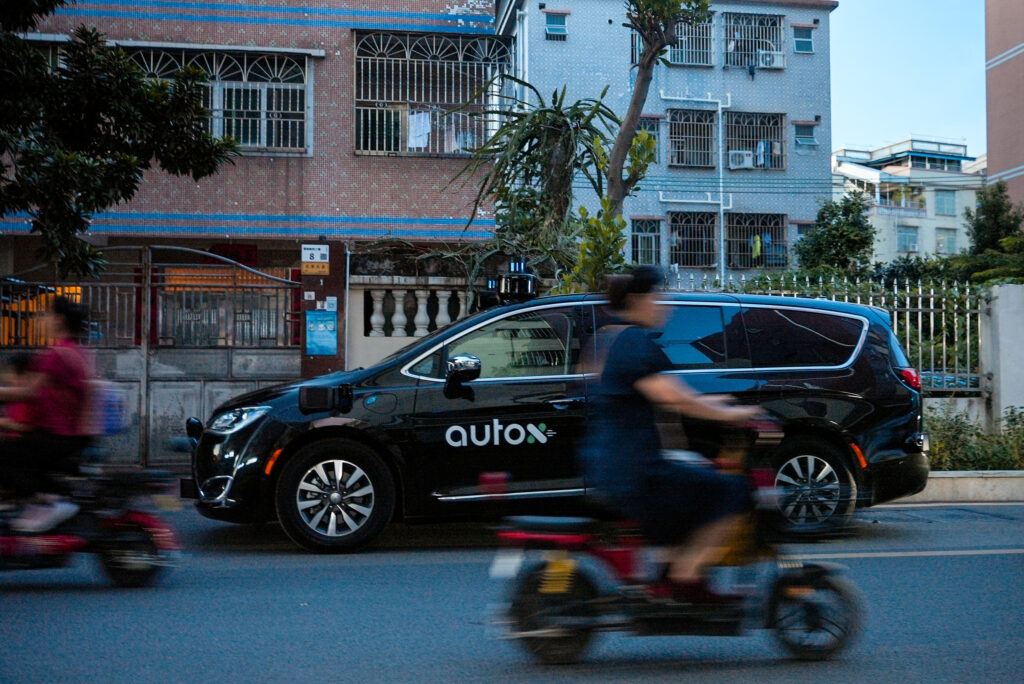
Democratizing autonomy: How AutoX is steering the driverless revolution. Source: AutoX
Democratizing autonomy: How AutoX is steering the driverless revolution
- In the first part of our interview, Xiao Jianxiong, founder and chief executive of AutoX discussed the hurdles to give birth to China’ first level four robotaxis.
- Here Xiao discussed how their tech, data, and having the right testbed could revolutionize transportation.
- Xiao also shared on AutoX’s outlook and how China remains the company’s top priority before properly expanding elsewhere.
When Xiao Jianxiong first started AutoX in 2016, it was with the mission of “democratizing autonomy”. He was basically inspired by the on-demand economy that uses location-based services to fundamentally alter industries such as food delivery and ridesharing. The goal was basically to take this concept even further by using self-driving vehicles to bring goods and services to everyone, wherever they may be.
“The software-hardware integrated approach enables AutoX to design hardware and sensors that maximize the performance with the software. By innovating ultra high resolution sensors, AutoX is able to maximize performance and safety at lower cost compared to using off-the-shelf products”, Xiao told Tech Wire Asia (TWA) in an interview recently.
Self driving is not something new for Xiao. In fact, he has spent the last 15 years or so researching and developing the technologies in computer vision. He also attributed his achievements to his academic years at MIT and Princeton, as for that he was able to collaborate with some of the most brilliant minds in these fields.What started as a one-man army a few years ago, has grown to a team of more than 1000 employees today, Xiao said.
Today, AutoX is scaling massively in China with a robotaxi fleet of 1,000 vehicles, which the company says are distributed throughout the cities of Guangzhou, Shanghai, Beijing and Shenzhen, where AutoX deploys a driverless fleet. In 2020, the company had also set up an 80,000 square feet RoboTaxi operations center in Shanghai to help facilitate operations of its driverless fleet, as well as act as a center to collect data from daily operations.
The center has also been able to store data obtained from simulation cloud computers running virtual tests non-stop, Xiao said. TWA spoke further with Xiao on this and the tech that acts as the backbone of the company.
In terms of data, you said that the government needs to be presented with data for them to be convinced. How has AutoX been working on this in order to get regulatory approval?
[For starters] there are actually three types of testing. The first type is the road tests while the other one is the closed test field. In China, there are a lot of cities with test tracks built for self-driving cars which contain all kinds of scenarios. So usually the regulators decide whether an autonomous vehicle passes or fails.
So that’s how they typically do it before you’re actually allowed to go on the road. Now, of course, we also have the simulation or virtual testing–and we do tons of them. So I would say it is really a combination of close field testing, road testing, and also simulation. For the government, they focus most on the closed field testing as it won’t be facilitated by us. Instead, a third party agency is hired to perform the testing.
What are the obstacles when it comes to operating fully autonomous Robotaxi services, especially in a very high density country? How do you also ensure that you meet the last mile connectivity goal?
First of all, I want to emphasize that it’s very important that you go to the city center, because for robotaxi businesses or any taxi businesses, you only make commercial sense if you go to the city center. Economically, it makes no sense to focus on suburban areas where only a few people are calling taxis.
That is why we have to aim for the city center but to get there is that we focus on almost everything from software, hardware, AI and data. For example, in terms of how we do this, we launched our latest Gen5 system for fully driverless RoboTaxis last year. That system is the most powerful self-driving system in China.
It has many ultra high resolution sensors and we have over 50 different kinds of sensors in the car. However, sensors are not enough, we also need to have a lot of computation power. Basically, you need to have a very fast computer supercomputer in the car to process the sensor data. Why, you ask? Because in the city center, the population are high and when your driverless car is at an intersection, with variety of obstructions, the car needs to be able to compute more data faster,\.

AutoX
That is why we had to design a super powerful computer in the car and that is how we came up with our Gen5 system. The Gen5 system has 50 sensors in total, as well as a vehicle control unit of 2200 TOPS computing power. There are 28 cameras capturing a total of 220 million pixels per second, six high resolution LiDAR offering 15 million points per second, and 4D RADAR with 0.9-degree resolution encompassing 360 degrees around the vehicle.
Using camera and LiDAR fusion perception blind spot modules, the Gen5 system covers the entire RoboTaxi body with zero blind spots. Gen5 enables AutoX RoboTaxis to drive safely on China’s complex urban streets by detecting occluded delivery scooters behind vehicles from several hundreds of meters away. The system’s higher resolution sensing capability also enables RoboTaxis to drive at higher speeds safely, extending the Operational Design Domain of AutoX’s driverless RoboTaxi fleet.
But our strategy has been okay, because aiming directly for the city center got us the maximum number of mileage, the maximum amount of data to test and get it right. That’s been our strategy and it really paid off at the beginning. That is why we needed to have a lot of cars to do testing at the same time– it speeds up the data gathering so we gather a meaningful amount in a day.
Having done a huge amount of tests in China, what are your plans for abroad like the US?
For now, we will still focus on China in the near future because it is the largest market. So we want to expand beyond the top four cities here since we are the market leader in this area. As for the US, we have also started doing some testing in there as well, considering it is the second largest market in the world.
But because our focus is mainly on China now, the expansion in the US will take time. For global expansion, I think it will probably take 10 to 20 years.
READ MORE
- 3 Steps to Successfully Automate Copilot for Microsoft 365 Implementation
- Trustworthy AI – the Promise of Enterprise-Friendly Generative Machine Learning with Dell and NVIDIA
- Strategies for Democratizing GenAI
- The criticality of endpoint management in cybersecurity and operations
- Ethical AI: The renewed importance of safeguarding data and customer privacy in Generative AI applications


